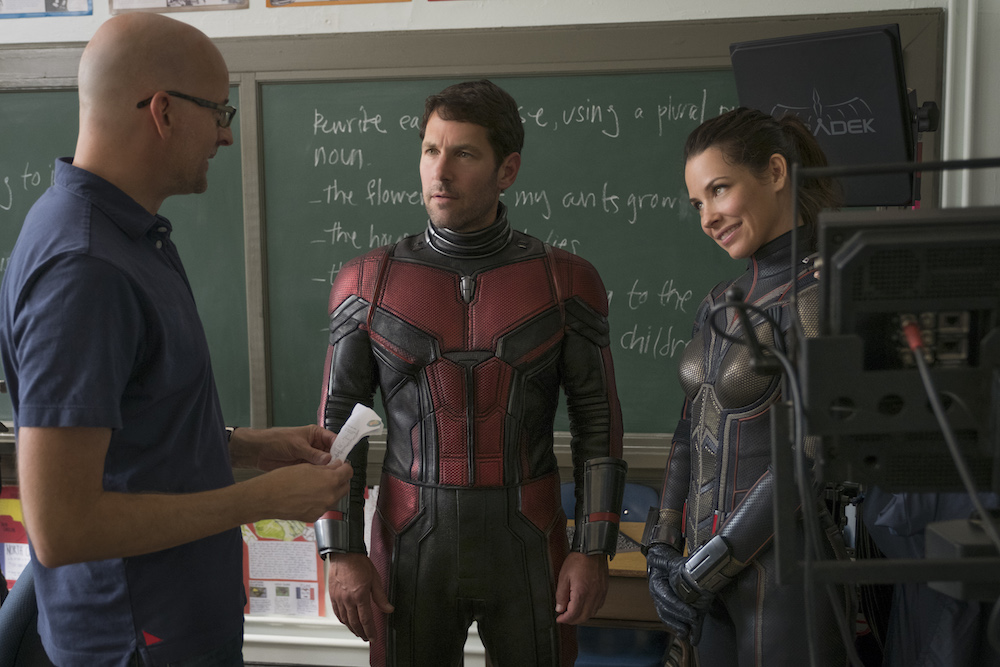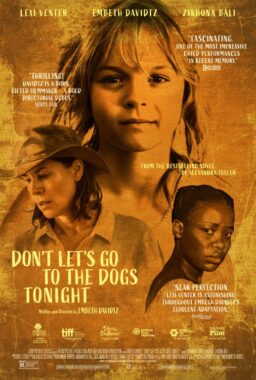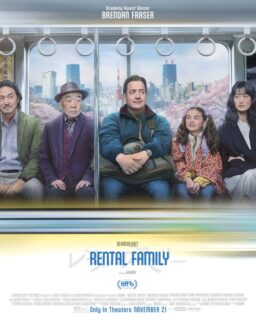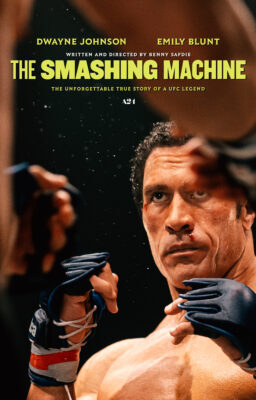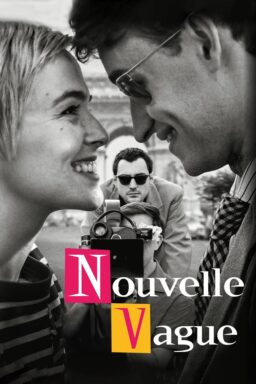“Ant-Man and the Wasp” may lack the humongous scale of “Avengers: Infinity War” or the self-conscious snakiness of “Deadpool 2” but it does contain one key element that those recent superhero sagas lacked—a genuine sense of fun and charm. In this follow-up to the 2015 hit “Ant-Man,” Scott Lang (Paul Rudd, who also co-wrote the screenplay) has been placed under house arrest and stripped of the suit that allows him to shrink and grow at will as the result of his participation in the illegal superhero-related activities witnessed in “Captain America: Civil War.” Now concerned with building a new relationship with his young daughter (Abby Ryder Fortson) and getting a security business that he has formed with his ex-con colleagues (Michael Pena, David Dastmalchian and T.I) when he is unexpectedly contacted by the father-daughter team of Hank Pym (Michael Douglas) and Hope Van Dyne (Evangeline Lily), whom he has been on the outs with since his arrest. Decades earlier, Janet Van Dyne (Michelle Pfeiffer), Hank’s wife, Hope’s mother and a superhero in her own right known as the Wasp was lost in the Quantum Realm while on a mission alongside her husband, the first Ant-Man and presumed dead. Now it appears that she may still be alive and that Scott, who briefly entered the Quantum Realm himself in the previous film, may hold the key to finding her along with new technologies developed by Pym. While Hope and Hank are driven by a desire to see Janet again,, there are a couple of entities who want Pym’s technology as well fo their own ends—sleazy black market technology dealer Sonny Burch (Walton Goggins) wants to use it to make a lot of money while a mysterious entity known as the Ghost (Hannah John-Kamen), who can pass through solid matter as the result of her own accidental exposure to the power of the Quantum Realm, wants it for her own very personal reasons.
If the original “Ant-Man” was a reasonably genial film that nevertheless contained a few glaring flaws, some of which may have been the inevitable result of an infamously chaotic pre-production period that saw a number of filmmakers come and go, “Ant-Man and the Wasp” manages to recapture the screwy charms of its predecessor while at the same time addressing most of those hiccups. Free from the onus of serving as an origin story for a character that may have been unfamiliar to a good chunk of the audience, returning director Peyton Reed tells a refreshingly small-scale (no world-threatening cataclysms to be had here), self-contained and often very funny story that does not require an intimate knowledge of every previous entry in the Marvel Cinematic Universe to work. And while Hope was largely kept to the sidelines in the previous film, her character, who has now taken on the mantle of the Wasp, is given a more central role in the proceedings (it is not called “Ant-Man and the Wasp” for nothing) and it is her drive to find her mother that gives the story the kind of recognizable emotional underpinnings that often get lost amidst the usual array of elaborate special effects. While the end result may not have the groundbreaking impact of a film like “Black Panther,” it is nevertheless one of the most likable of all of the MCU films to date and will no doubt have viewers eagerly anticipating the future adventures of Ant-Man and the Wasp.
Recently, Reed, whose previous films include the cult comedies “Bring It On” and “Down With Love,” got on the phone to discuss, among other things, what he wanted to bring to the “Ant-Man” saga this time around, the involvement of Michelle Pfeiffer and the film that had a key influence on his desire to become a director in the first place.

What was it that first got you interested in becoming a filmmaker? Was there a particular title that grabbed you and made you think of making movies as a pursuit in life?
I will tell you that as a kid, I was obsessed with the “Planet of the Apes” movies. The original “Planet of the Apes” is the film that got me intrigued. I grew up as the kind of kid who was just plopped in front of the television and watched a lot of movies but “Planet of the Apes” struck a chord in me and it really was a gateway drug to me in to movies and reading in regards to science-fiction. I think one of the things that I responded to in the movie was what is now commonly known in the business as “world building”—the incredible specificity of the caste system. I was obsessed with all that stuff and with how richly drawn it was and with the cool makeup and how transporting it was. That movie had a big, big impact on me.
The original “Ant-Man” had a infamously rocky pre-production history that found you signing on fairly late in the process to make a film that had to work as an origin story, while introducing a superhero character that a large chunk of the audience had never heard of. Having gone through all of that and having proven the commercial viability of the character, how did that experience help govern what you wanted to achieve with “Ant-Man and the Wasp”?
That first movie for me was a fantastic experience. It was hitting the ground running and non-stop energy. I had done a bunch of films before that, comedies, but I wanted to make the leap into doing something that was storytelling on a much larger palette and when that opportunity came along, I jumped at the chance. As you said, it was a very compressed prep period for me but I found it really, really exhilarating and I brought to it a knowledge of visual effects. I had done some visual effects before but it was something that, from a very young age, I had been reading about in things like Cinefex. I was also a Marvel Comics fan as a kid and brought with me a knowledge of all those characters. It was just a good fit for me and Marvel has been good at sort of casting directors for the movies.
I also liked that it was more comedic in tone and I loved the idea of doing action-comedy stuff. Actually, more visual comedy because I had done comedy before. One of the things that I look for in a screenplay is the visual component—that we are not just capturing people telling jokes but where the camera and the filmmaking were complicit in the comedy. For me, the first “Ant-Man” checked all those boxes and when it came time to do “Ant-Man and the Wasp,” I was thrilled because we had a proof of concept that people had accepted these characters and we were free to not have to do an origin story and instead jump right in to further their stories and also go even more nuts with the visual conceits of the movie.
One of the things that I liked about this film is that while it does a connection with the events involving Ant-Man in “Captain America: Civil War,” it pretty much tells a standalone story that does not require an intimate knowledge of every other MCU title and doesn’t include guest appearances from other superhero characters.
I really like that because it allows us to spend more time and tell a more intimate story about these families—the Pym/van Dyne family as well as Scott’s family—so that we can do the big spectacle and have it on sort of an equal footing with the smaller character comedy. With the character drama, I was talking about how I liked that with this movie and the character of Scott Lang, there is equal weight put on the fate of his small business that he started with his friends as there is on him getting Janet out of the Quantum Realm. That seems like a fun tone to me with these two elements coming into conflict throughout the body of the story for Scott and carry equal weight—it is just as important for him to get a small business off the ground as it is for him to go subatomic for this crazy mission to potentially rescue someone. I like the charm of that and I really think it grounds things in a great way. I also liked how at its core, it is really a story about fathers and daughters, whether they are literal like Scott and Cassie or Hank and Hope or more metaphorical like the characters of Bill Foster and Ava. It allows us to serve that character side maybe more than if we had three tons of characters.
It also makes things more interesting in that the stakes in this one are of a more emotional type than is normally found in this type of filmmaking—although there is plenty of action, the driving force is more interested with whether these parents and children will connect than with whether some Big Bad is going to destroy the world or not.
If you look at “Infinity War” and “Ant-Man and the Wasp,” the stakes in both are very primal. In “Infinity War,” they are existential and huge while in our movie, they are just as personal but they are grounded in family and the idea of “Can I get the mother I lost 30 years ago back?” For Scott, it is the question of if there is room in his life to be a hero without jeopardizing his relationship with his daughter. These family dynamics and relationships are central to their concerns and I also like that it can also celebrate the smaller acts of excitement and heroism. For Scott, being a good dad to his daughter and making that the central cause in his life is inherently heroic and I like how the movie can deal with that level of heroism as well as trying to stop someone from stealing a skyscraper.

The film is called “Ant-Man and the Wasp” and the two characters are both pretty much on equal footing this time around—it could be argued, in fact, that the latter is actually more important because it is Hope’s emotional journey in trying to get her long-lost mother back that really drives the story along. Was making Hope/The Wasp a more central part of the proceedings in this film something that you were aiming for right from the start?
It was. We knew we always wanted to center this story around this very personal mission to try and find Janet van Dyne and that this would be very personal for Hope. We start the movie with this prologue where we see the seven-year-old Hope and the relationship with her mother to show that it is an intensely personal mission for Hope. That was always there by design and the idea of having this second chapter in Hope’s life, now that she has repaired her relationship with her father and become the hero that she and the audience always knew she was—how does that affect her? She is obviously the same character but a very different persona here from what we saw in the first movie.
The film is also quite funny as well and somehow manages to have the feel of people kind of making it up as they go along. Obviously that is not actually possible with a project of this site and scope but it has the feel at times of something like “Ghostbusters,” where there are elaborate effects in almost every scene while at the same time, the actors almost seem like improv performers on a roll.
It is a big part of my job on a movie like this to shield the actors as much as possible from any of the technical concerns of a movie of this size so that they can be freed up to be loose and funny and keep the life and spontaneity to the performances. Particularly with Paul Rudd’s style of humor, it has to have a little bit of room to live and breathe and help ground things because he is the audience surrogate—he is a normal guy and not a super-soldier or a billionaire. He is just an average person who has made bad choices but who also continues to get sucked into these larger-than-life situations. For us, it is important to stop and play the reality and the absurdity of these situations. Part of my background is in improv comedy and doing things like “Upright Citizen’s Brigade” and “Mr. Show” for television hopefully informs the tone of the movie and gives an inner life to all of the characters.
The last time we saw Scott on screen was in “Civil War” and indeed, part of this film deals with the repercussions of what he did over there. In a situation like that, what sort of coordination, if any, is there between the various filmmakers working on MCU projects to ensure a degree of consistency in the approach to the characters regardless of who is directing?
It is cool and very different as a creative exercise. There is a lot of conversation between the directors. During the first “Ant-Man,” I was showing footage of Paul Rudd playing Scott Lang to the Russo brothers and their writers so that it would inform how they approached the character in “Civil War” to keep him in sync, and the events of that film serve as a jumping-off point for our movie. There is a lot of crosstalk and that is really good because it would be my worst nightmare to see another movie like “Civil War” or something else and seeing Scott Lang saying or doing something or Hope van Dyne saying or doing something that was completely out of character. You do feel a sort of ownership of these characters—I love these characters and have specific ideas of what they would and wouldn’t do. It is important for each director to not betray what the other directors have created.

In this film, you utilize another Marvel character, the Ghost, to serve as the main antagonist, for lack of a better word. However, this version of the character, who never appeared in any of the “Ant-Man” comics, is markedly different from the one found in the comics. What was behind the decision to utilize this particular character?
We were looking for a particular type of antagonist for this movie. There are these Marvel encyclopedias that we access and we get a log of all the characters that they have ever had. Using the Ghost struck me for two reasons. First, I liked the visuals. I liked how this character looked—the suit was very haunting. I also liked the power set as well. If you have a team of Ant-Man and the Wasp fighting someone, I didn’t want them to fight another antagonist with similar powers—I wanted them to have something different. Ghost was a much lesser known character in the comics, so we were free to reinvent that character as much as we wanted. The comics Ghost is a man and doesn’t really have any kind of personal connection to the heroes. We set about in the writing to really changing that and making Ghost into an antagonist that really fit the themes of the story we were telling.
Beyond the fact that she has already played one of the more memorable characters in the history of comic book films as Catwoman in “Batman Returns,” what was it that inspired the casting of Michelle Pfeiffer as Janet Van Dyne?
In the first “Ant-Man,” there is a brief flashback of the original Ant-Man and Wasp. You don’t see her face but you just see her eyes. When we were casting for the woman who was going to play the eyes of the original Wasp, my only thing was that she should look like Michelle Pfeiffer and have the big Michelle Pfeiffer eyes and that was what we did for the first movie. This time around, when it came time to cast her, Michelle Pfeiffer was always the dream casting for this part and even though I was sure that it was a long shot, I really wanted to go after her. She came in and we met and talked about the character and the world and all of this stuff and thankfully she said yes because I had absolutely zero backup plan for that character. I have always been a fan of Michelle Pfeiffer and feel that there is nothing that she cannot do. I liked how she would breathe life into this character.
Besides the expected spectacle of things either shrinking or growing, one of the film’s biggest visual coups is the extended glimpse that we get of the inside of the Quantum Realm. Considering that this is an element that be essentially anything that you want it to be, is it easier or more difficult to visualize something like that completely out of whole cloth than to do effects like the shrinking/enlarging that have at least some basis in the real world?
It is definitely more challenging to do something like the Quantum Realm since it is something that can be anything that you want it to be in terms of how it looks or just conceptually. On both movies, we had this guy named Spiros, who was our quantum expert, and we talked about if you could survive the shrinking process, what would it be like, look like and sound like? At a certain point, if you are very small, it becomes about probabilities and mathematics than anything terrestrial. That was the tough thing—trying to figure out how to visualize it and how to make it fit with the rest of the movie, which is very grounded and where viewers have reference points since the rest of it is set in the real world. All of that sort of went into that thinking, especially for the back half of the movie where we are cross-cutting between this car chase in San Francisco and the mission down in the Quantum Realm. A lot of thought went into how we would photograph it as well. It should take a lot of cues from our world but maybe we should see the imitations of the photography—that we have shrunk so small that we have to get a shot of a character down there and it is going to be a little grainy and a little jittery and the focus isn’t always going to quite be there. I like the idea of playing with the limitations of what the photography would be if you could actually shrink a camera down and put it in the Quantum Realm.
Considering the size and intense devotion of the MCU fanbase, what has your experience been like in dealing with them over the course of working on these films?
It has been good. I don’t really do much social media—I am just on Twitter. I am someone who has followed the whole idea of fan culture because I was a fan and am a fan. As a kid growing up, I was just obsessed with these things like “Planet of the Apes” and “Star Wars” and Spielberg’s stuff and comics. I really do understand that mindset where you, for whatever reason, have a very deep connection to certain material and certain characters and you start to feel very connected and have very specific ideas about those stories and characters and where you may or may not want them to go. It has been really interesting to see where it has gone in the last handful of years.

